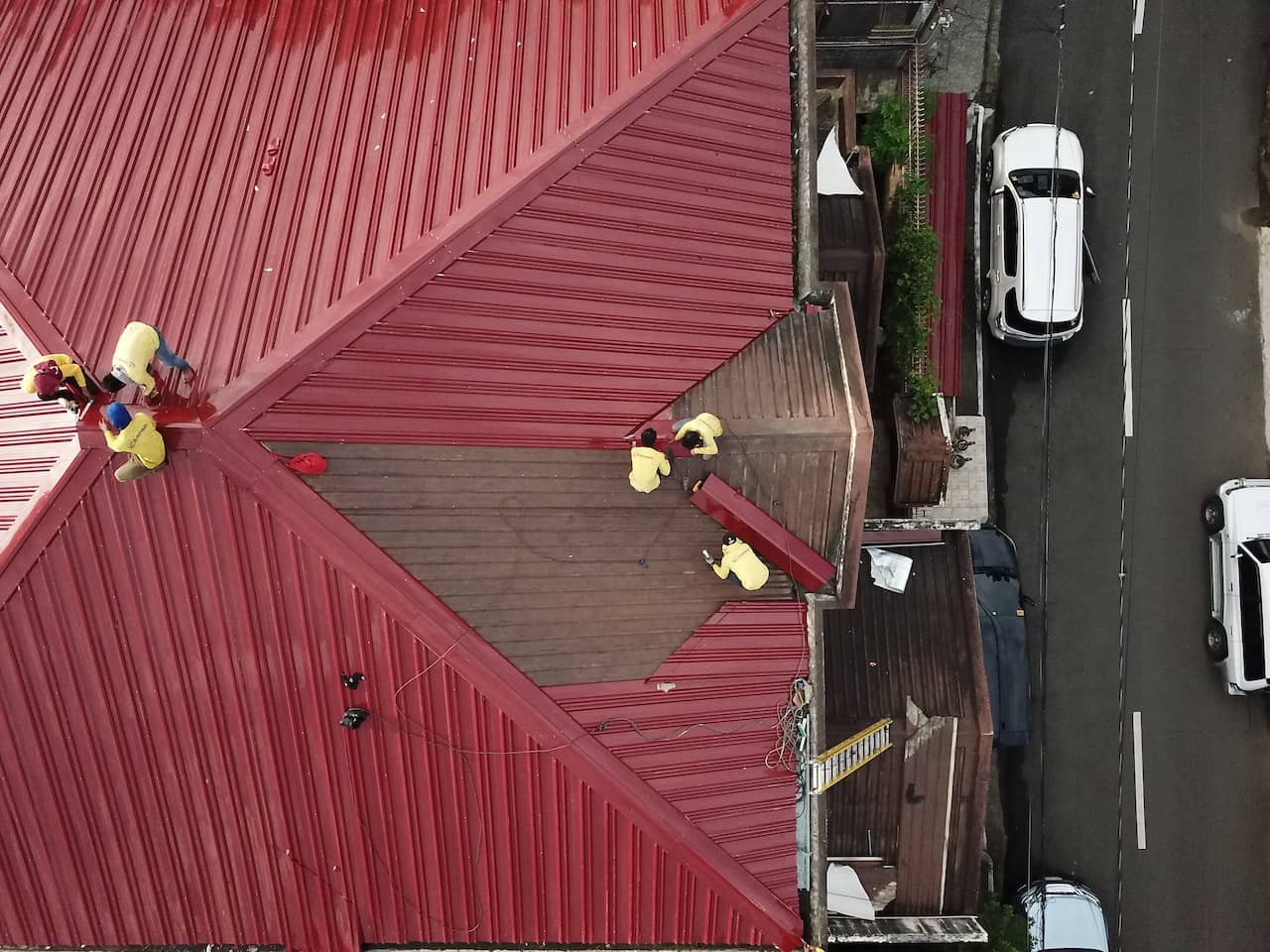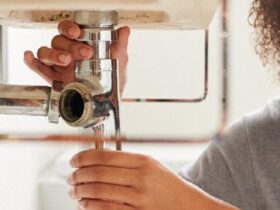Property owners often overlook the importance of roofs regarding safety and security. In addition to providing shelter and insulation, roofs protect against external elements such as hailstorms, extreme heat, and wind while preventing unauthorized access. Proper roof maintenance ensures occupants’ safety and the building’s structural integrity. This article will consider the essential factors influencing your decision to fix, update, or replace your roof. We will also explore how installing Babcock Davis’ L 50TB Thermally Broken-Service Stair Access Roof Hatch can facilitate regular inspection, maintenance, and repairs, ultimately extending the roof’s lifespan. Additionally, we will discuss the benefits of opting for a resilient roof system and how installing a roof hatch enhances its effectiveness.

Understanding Roofing Repair and Replacement
Roofing repair involves fixing or restoring damaged parts of a roof. Construction professionals identify the problem’s root cause and assess the damage’s extent. Solutions for localized issues include flashing repair, patching roof sections, or sealing. Water leakage is a common reason for roofing repair as it can cause structural damage and health concerns due to mold and mildew growth. Moreover, roof leaks can impact indoor temperature, increasing HVAC usage and higher energy bills.
Roofing replacement, on the other hand, entails completely removing the damaged roof and replacing it with a new one. This option is necessary when the existing roof is extensively damaged, nearing the end of its lifespan, or when upgrading to a more durable and energy-efficient roofing system. Severe weather conditions like hailstorms, constant exposure to UV rays, and aesthetic considerations are common reasons for owners to replace their roofs.
Factors to Consider: Scope, Time, and Cost
Several factors should be considered when deciding between a roof repair and replacement.
| Factor | Roofing Repair | Roofing Replacement |
| Scope | Minor Fixes | Entire Roofing System |
| Time | Quicker | Time Consuming |
| Cost | Less Expensive | Costly |
| Lifespan | Lifespan is as is | Promotes Longer Lifespan |
| Appearance | Aesthetic is not a focus | Enhances Visual Appeal |
Scope: Roofing repair is suitable for minor fixes that address specific areas or materials needing attention. It focuses on resolving isolated problems, such as damaged areas or materials. Conversely, roofing replacement covers the entire roof and may be necessary to enhance safety, security, or aesthetics.
Time: Roofing repair can typically be completed more quickly as it involves targeted fixes to localized problems. However, roofing replacement is a complex procedure that requires time and precision to ensure proper installation. Repair technicians must take the time to ensure the roof system is installed correctly.
Cost: Roofing replacement is generally more expensive than repair due to the extensive work involved, often requiring multiple professionals. In contrast, roofing repair can be a more cost-effective solution, especially if property owners possess the knowledge and skills to perform the repairs themselves or can hire a single professional.
Preserving the Life of Your Roof
General maintenance and regular roof inspections preserve the integrity of your roof. Installing Babcock Davis’ L 50TB Thermally Broken – Service Stair Access Roof Hatch provides convenient access to the roof, making it easier for professionals to perform routine inspections and necessary maintenance tasks.
Regular Inspections: Routine roof inspections allow experts to find issues before they become more significant, costlier problems. Detecting and repairing minor damages promptly helps maintain the roof’s structural integrity and prevents further deterioration. With a quality roof hatch, property owners can ensure easy and safe access for inspection purposes.
Maintenance: A roof hatch facilitates regular maintenance tasks. Whether it involves fixing flashing, patching roof sections, or sealing, having a reliable access point ensures that maintenance technicians can efficiently and effectively carry out their work. Timely maintenance prevents further damage to the roof and safeguards the occupants from potential hazards.
Opting for a Resilient Roof System: Enhancing Durability and Longevity
In cases where a roof replacement is necessary, property owners can choose a resilient roof system that enhances durability and longevity.
Resilient roofing systems are designed with specific objectives in mind, aiming to:
- Foster sustainability: Employ environmentally conscious materials and construction methods to minimize ecological impact.
- Enhance thermal performance: Regulate indoor temperatures efficiently to keep building occupants comfortable and reduce energy reliance.
- Withstand natural forces: Resist the damaging effects of severe weather conditions such as high winds, hail, and heavy rain to maintain the structural integrity of the building.
- Preserve weather resistance after damage: Sustain the ability to protect against the elements even when the roof encounters partial damage.
- Facilitate easy repairs with standard tools: Enable efficient maintenance and repairs using readily available tools and materials, ensuring prompt resolution of issues.
- Adapt to changing weather conditions: Demonstrate resilience in the face of varying climate patterns, providing long-term performance and protection.
Resilient roofs offer significant benefits, including:
- Enhanced safety and reliability: Withstanding severe natural disasters, resilient roofs ensure uninterrupted daily activities, allowing critical facilities like hospitals, schools, banks, prisons, and government offices to remain operational and protect occupants.
- Energy efficiency and natural light utilization: By incorporating design strategies such as thermal mass integration and maximizing natural light entry, resilient roofs can conserve energy, reduce reliance on artificial lighting, and create a sustainable and comfortable indoor environment.
Resilient roofing systems provide substantial benefits by embracing sustainability, thermal performance, natural force resistance, post-damage weather resilience, ease of repair, and adaptability to changing weather conditions. These advantages encompass improved safety, reliability, energy efficiency, and sustainability, contributing to a resilient and sustainable built environment. A resilient roof system withstands the challenges posed by severe weather conditions, minimizes damage, and offers long-term protection. By selecting a resilient roof system, property owners can enhance the lifespan of their roofs, reducing the need for frequent repairs and ensuring the long-term functionality and safety of the building.
Incorporating a roof hatch into a resilient roof system offers several advantages. It provides convenient access to the roof for inspections, maintenance, and repairs, allowing property owners to address any issues promptly. Regular inspections help locate concerns early on, preventing larger and costlier problems from developing. Maintenance technicians can efficiently carry out necessary tasks with a roof hatch, ensuring the roof system remains in optimal condition.
Furthermore, a resilient roof system can contribute to energy efficiency and sustainability. A resilient roof minimizes heat transfer by selecting materials with high thermal resistance, such as reflective coatings or insulation, reducing the building’s reliance on HVAC systems for temperature regulation. Installing a roof hatch promotes proper ventilation and natural daylighting, enhancing energy efficiency and occupant well-being.
Conclusion
When faced with the need for roof repair or replacement, careful consideration of various factors is essential. Roofing repair is suitable for minor fixes, while roofing replacement may be necessary for more extensive damage or aesthetic enhancements. Regular roof inspections and maintenance, facilitated by the installation of Babcock Davis’ L 50TB Thermally Broken – Service Stair Access Roof Hatch, are crucial for extending the roof’s lifespan and ensuring its continued functionality. Additionally, opting for a resilient roof system enhances durability and longevity, minimizing the need for frequent repairs and providing long-term protection. When embarking on a roof replacement project, considering a resilient roof system and incorporating a roof hatch are crucial steps toward achieving a long-lasting, high-performing roofing solution.











